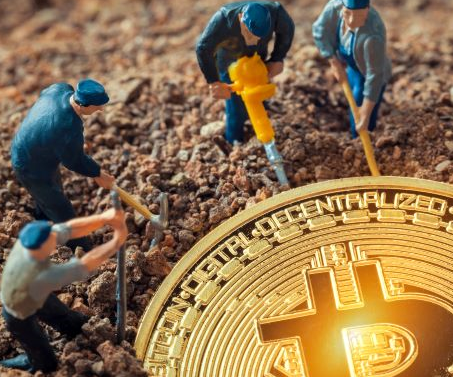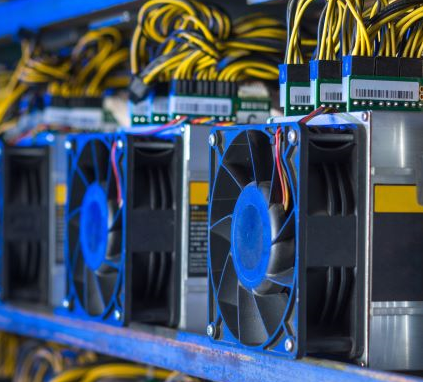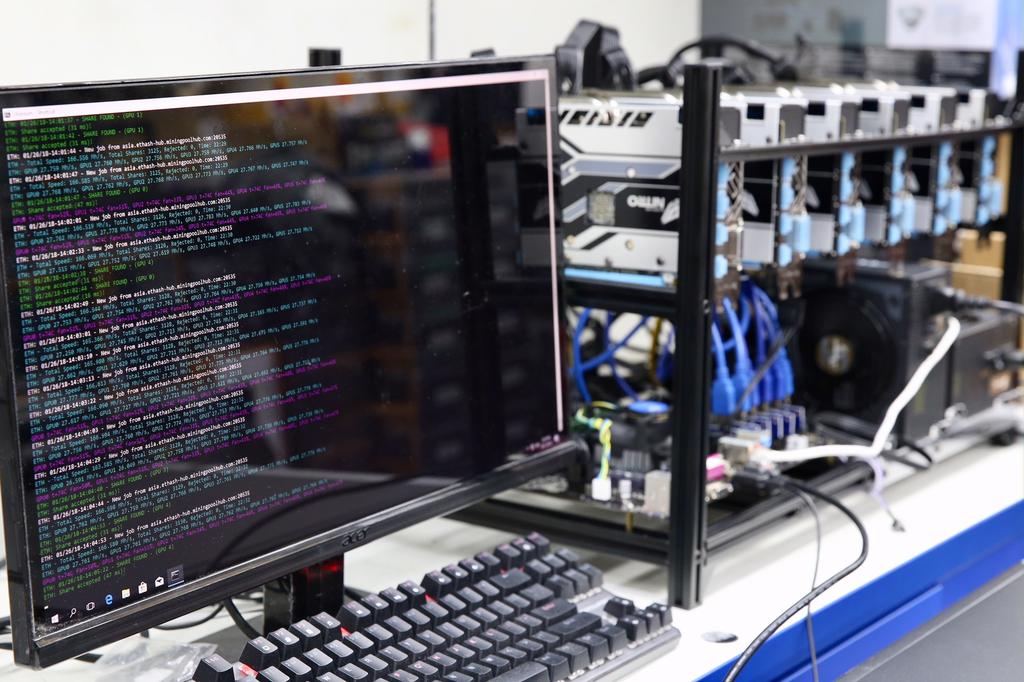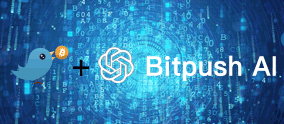 值得信赖的区块链资讯!
值得信赖的区块链资讯!
Dissolving the Myths of Crypto Mining – Part 1
Way before we knew about crypto, we knew about mining. The undeniable buzz surrounding the mining business has been pretty overwhelming. If you ask your next door neighbor to explain what miners do your might hear something along these lines — mining is something that earns you a lot of cash, you just have to solve some puzzles, it burns a lot of electricity, so on and so forth. Sounds intriguing, does not it? It certainly does, however, and sadly so, this description can be pretty misleading. The following blog aims to decrypt all the myths associated with crypto mining and investigate who miners are, how do they get involved and what their business strategies and operations look like.

Miners
Mining plays a significant role behind seamless digital asset transaction: it validates the transfers, generates and stores blocks and reaches consensus upon which blocks to be included in the blockchain string. But what exactly do miners do?
The biggest misconception there exists is that miners are individuals who sit at their computers and solve complicated mathematical puzzles around the clock. The truth is that not miners but the computers with the special embedded software automatically run and solve the puzzles by pairing transaction hash with the matching hash. There is no need for a human to be sitting at the computer, as the software does everything autonomously. What humans do is that they engage in mining for pure economic interest and simply contribute their computational power to mining by purchasing/renting the special machines and incurring the electricity and cooling costs.
The special mining hardware is an advanced high-level equipment used to make speedy complicated computations on the blockchain. For a high-quality hardware, price tag ranges between $636-$3,000, depending on performance and energy-consumption properties. In addition to the upfront costs of equipment installation, recurring big energy bills also add up to miners’ expenses, as mining consumes a lot of power. What is more, the hardware has short lifetime value — as the mining difficulty constantly increases, once superior technology might quickly become obsolete and idle.

As of today, professional mining companies dominate the industry. They produce special equipment and either sell or rent them to the interested parties. Some of them also have large mining farms — data centers equipped with superior technology that continuously mine different cryptocurrencies. These farms are usually located in favorable settings and enjoy a low cost of electricity to decrease monthly electric bills, high network speed to make speedy operations and cool climate to keep cooling costs minimal.
Individuals who want to get involved in mining usually purchase or rent hardware from professional companies and join mining pools. Mining pools use the computational power provided by individual miners and create a big pool. With many miners, a pool has a greater chance of finding a coin, but the reward tends to be distributed among the members. The pool operator, a blockchain network administrator, manages mining activities and in accordance with the reward distribution strategy splits up the payments among the members.
Solo mining is also an option, however, as the field is becoming more advanced, technical and costly so is the process of starting up. Thus, individuals tend not to take on this journey single-handedly. Solo mining has its perks as whoever finds a coin claims all the rewards. But on the flip side, getting rewarded might be a challenge. If we examine the number of blocks that a miner can generate in the first year of her/his entrance in the industry, the variance is rather high, while the generated blocks pretty low.
Mining
Let’s move to the actual mining procedure. Broadly speaking, the mining process comprises of two distinct parts:
-
The one where transactions and blocks are validated
-
And the one where miners race to find the block and generate profit.

In order for the blockchain to function you only need the former fulfilled; somehow the second part is key in incentivizing miners to be part of the system and complete the above. This way both of the tasks are critical for the network to function as a cryptocurrency.
To dig deeper, let’s go over the six essential steps that need to be accomplished, after joining the Bitcoin network and connecting up with other nodes of the system:
-
Watch out for transactions — Miner should listen to transactions happening on the network and check for double-spending as well as for the valid signatures on the transfers.
-
Retrieve an up-to-date blockchain and listen for the new blocks that are broadcasted — Get the existing blockchain ledger from other nodes on the network and work on maintaining it.
-
Generate a candidate block — With a valid historical blockchain now miners can start assembling their own block by validating transactions and gathering them in one block that is an extension of the last block on the blockchain. To break it down a little bit more, first, they have to validate the transactions from the pool of pending transactions and then compile them in one block the header of which will contain a hash of the previous block and will point back at it. Thus, during this process mines are generating a Markle Tree of singular transactions and a block that contains all this data, which will eventually be placed on the blockchain ledger if approved by other miners.
-
Validate the generated block by finding an accurate nonce — The next step is validating the generated block, which is done by finding a correct nonce. The nonce resides in the header of the block and has 32 bits. Miners need to try different possible nonce values that could produce a valid hash for the block. Once they land the right combination the block will be fully prepared to be broadcast in the network to other nodes.
-
Be hopeful that the block gets accepted by other miners — Once the block is validated, it is advised to immediately announce the achievement. However, broadcasting the block does not always mean that it will be accepted by the network during the consensus process. Other miners might accept a block generated by another node and start building a new block on top of it. This might make you wonder how can another miner’s block be accepted over mine? Are all miners solving the same puzzle? The answer is no — not everyone’s block is identical. They might be sharing some transactions, however, it is highly unlikely all miners to include thr same transactions in their blocks. However, if we allow of such case, the puzzles will still not be identical because generated blocks contain public key of a miner, which will stand as a differentiator between the blocks.
-
Generate the cash flow! — If the nodes accept your block you will make a profit and earn 25 Bitcoins, which using the current exchange rate, is around 160,00 USD. In addition to this reward, the miner will also be receive another modest prize which is transaction fees contained inside the block.
Mining difficulty tends to increase as more blocks are added to the blockchain. For example, the difficulty of mining a bitcoin rises in every 2,016 blocks or in two weeks. This ensures that each block mining will take on average 10 minutes. As more miners enter the platform, the hash power increases and the time required to mine drops, thus increasing the level of difficulty in every 2 weeks ensures that this standard time that elapses between two consecutive blocks on the blockchain is adjusted and maintained.
Conclusion
Cryptocurrency mining is embedded with misconceptions and stereotypes that need to be addressed. Mining has often been compared to the valuable metal mining, where amateurs get hyped with prospects of quickly accumulating wealth and, without much thought, rush to enter the market just to be sent back off empty-handed. It is up to your personal judgment to decide which path to take, however, It is crucial to understand all the drawbacks and benefits associated with the mining business in order to make an effective decision.
The next blog post will explore and discuss some other aspects of the mining, stay tuned!
Work Cited
[1] Narayanan, Arvind, Joseph Bonneau, Edward Felten, Andrew Miller, and Steven Goldfeder. Bitcoin and Cryptocurrency Technologies: A Comprehensive Introduction. Princeton and Oxford: Princeton University Press, 2016.
比推快讯
更多 >>- Bitget 获第 11 届 Benzinga Fintech Awards最佳加密货币交易平台奖项
- 终极空头巨鲸重新下调止盈区至 7.5 万美元,本月已提现 2209 万美元保证金
- 摩根大通:不再预计美联储将在 12 月降息
- Silo Labs 更新 xUSD 脱锚事件处理进展,目前已确认还款约 213 万美元
- 数据:当前加密恐慌贪婪指数为 15,处于极度恐慌状态
- 易理华:现货策略抄底 ETH 依旧未变,看好 ETH/BTC 后续行情
- 达利欧警告:AI 泡沫暂时不会破裂,现在离场还太早
- 数据:61.26 枚 BTC 从 Coinbase 转出,价值约 498 万美元
- 加密总市值下探至 3 万亿美元
- Mike Alfred:有人正通过衍生品试图压低比特币价格并恐吓投资者抛售
- 某鲸鱼向 Hyperliquid 存入 224 万枚 USDC,并以 40 倍杠杆做空 BTC
- Hyperliquid 上最大 BTC 空头单币浮盈 3180 万美元
- MoonPay Ventures 宣布对加密钱包 Zengo Wallet 进行战略投资
- 数据:CTSI 24 小时跌超 29%,DATA 跌幅超 35%
- ZEC 矿工日收益小幅提升,挖矿难度接近历史最高水平
- 花旗银行与 Swift 完成法币与数字货币 PvP 结算流程试点
- RootData:SIGN 将于一周后解锁价值约 377 万美元的代币
- 数据:昨日以太坊现货 ETF 净流出额达 2.6066 亿美元
- Irys 公布代币经济学:8% 将用于空投及未来激励
- 高盛预警:美股暴跌背后暗藏极端对冲恐慌
- VanEck:本轮比特币抛售潮由中期持币者驱动,长期持币者保持稳定
- 中国央行与阿联酋央行启动支付互联与 JISR 多边数字货币桥项目
- 数据:过去 24 小时全网爆仓 8.32 亿美元,多单爆仓 7.13 亿美元,空单爆仓 1.19 亿美元
- Bitwise XRP ETF 上市,美国 XRP 现货 ETF 单日总净流入 1.18 亿美元
- Tom Lee:加密市场去杠杆周期调整或接近尾声
- Re7 Labs 发布 xUSD 脱锚事件更新,已聘请律所推进法律行动和资产追回
- 数据:1999.99 枚 ETH 从 Crypto.com 转入 Deribit,价值约 571 万美元
- Mu Digital 完成 150 万美元 Pre-Seed 轮融资,专注将亚洲高收益信贷引入链上
- 数据:某巨鲸 wstETH 头寸遭清算,价值约 652 万美元
- Dinari 整合 LayerZero,实现跨链交易代币化美股
- 数据:币安 60% 交易量来自山寨币,创年内新高
- VerifiedX 与 Crypto.com 合作,托管及 OTC 服务支持 15 亿美元资产
- 英国严重欺诈办公室调查 2800 万美元加密基金崩盘案,两人被捕
- 美 SEC 将于 12 月 15 日举办加密货币隐私问题圆桌会议
- DAT 飞轮熄灭,加密 KOL 暗示 DAT 公司将抛售储备,市场仍将深度洗盘
- 亚洲早盘金价下跌,市场对美联储降息存疑
- 某比特币巨鲸做空浮盈超 5700 万美元
- 数据:CZ 对手盘巨鲸 ETH、XRP、DOGE 多单全部由盈转亏,现浮亏已超 3200 万美元
- CZ 对手盘巨鲸多单浮亏近 3200 万美元,以太坊多单爆仓价为 2,528 美元
- 贾跃亭参投上市公司 QLGN 已更名为 AIxCrypto,将开展股票代币化业务
- 某机构巨鲸今日转向做多
- 曾借币做空 6.6 万枚 ETH巨鲸再次增持价值超 1.62 亿美元 ETH,总持仓升至 432,718 枚 ETH
- 俄罗斯利用加密货币洗钱网络资助 Marsalek 间谍组织
- 分析师:就业数据未能明确利率前景,市场缺乏上涨动能
- 摩根大通:若 Strategy 股票被指数剔除,或面临数十亿美元资金撤离
- 美联储鹰派齐发声,资产价格崩盘风险或成降息新拦路虎
- 数据:“麻吉”再次加仓 25 倍以太坊多单,爆仓价 2818.3 美元
- 特朗普提名 CFTC 主席候选人塞利格获参议院委员会通过
- G20 金融监管机构呼吁密切关注私人信贷与稳定币发展
- Movement 再将 5000 万枚回购的 MOVE 代币转回 CEX
比推专栏
更多 >>观点
比推热门文章
- Silo Labs 更新 xUSD 脱锚事件处理进展,目前已确认还款约 213 万美元
- 数据:当前加密恐慌贪婪指数为 15,处于极度恐慌状态
- 易理华:现货策略抄底 ETH 依旧未变,看好 ETH/BTC 后续行情
- 达利欧警告:AI 泡沫暂时不会破裂,现在离场还太早
- 数据:61.26 枚 BTC 从 Coinbase 转出,价值约 498 万美元
- 加密总市值下探至 3 万亿美元
- Mike Alfred:有人正通过衍生品试图压低比特币价格并恐吓投资者抛售
- 某鲸鱼向 Hyperliquid 存入 224 万枚 USDC,并以 40 倍杠杆做空 BTC
- Hyperliquid 上最大 BTC 空头单币浮盈 3180 万美元
- MoonPay Ventures 宣布对加密钱包 Zengo Wallet 进行战略投资
 比推 APP
比推 APP








